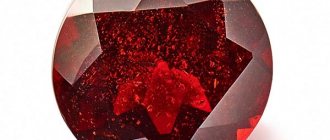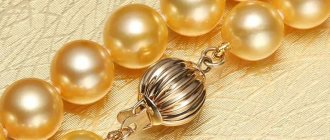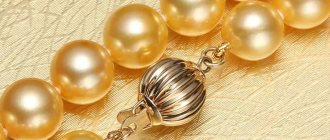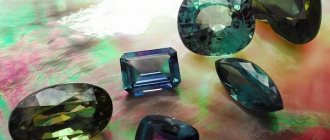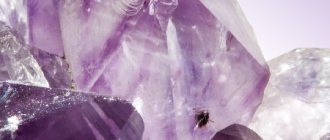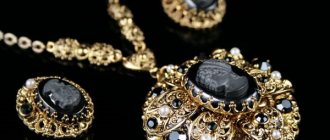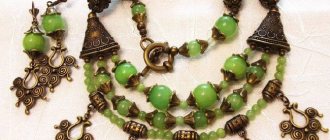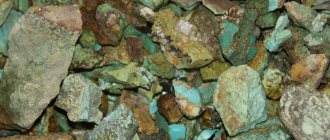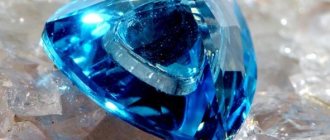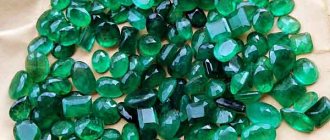History and origin
The history of the gem dates back five thousand years. The sky-colored mineral among ancient peoples symbolized the supreme deity. Other myths claim that turquoise is the bones of people who died from unhappy love.
Turquoise
The oldest objects made from the mineral were discovered in the tombs of the rulers of Ancient Egypt - Queen Zara and Tutankhamun. Turquoise was used to decorate jewelry, amulets or amulets. For example, the warlike Janissaries decorated themselves, weapons and horses to make themselves invulnerable.
The mineral is highly valued in Tibet: here it is a jewel and currency. The properties of turquoise to fade and change color attracted the attention of shamans and sorcerers: they used the stone for fortune telling. The Chinese use it to prove their devotion and loyalty to their significant other.
Turquoise light stones decorated the throne of Boris Godunov, delivered from Turkey: sitting on it, the sovereign calmed down. Ivan the Terrible demonstrated to the ambassadors and entourage how the stone changed color in his hands. The court doctors explained to the king what this meant.
The stone has a special significance for the Muslim world: the Koran is inscribed on blue turquoise.
Turquoise became known to Europeans as the “Turkish stone”; in Russia the Persian name stuck. The mineral acquired its classical name in the 13th century. It is translated differently: “firyuze” is a stone of happiness, “piruz” is a mineral of winners.
Turquoise stone
Compatibility with other stones
In addition to metal (silver), turquoise activates its creative powers together with some other precious stones. A more successful tandem would be a combination with:
- Sapphire.
- Topaz.
- Agate.
- Jade.
- Jasper.
- Malachite.
- Lapis lazuli.
- Quartz.
Do not combine with fire stones such as amber and fire opal. Communication with them will create chaos in the energy sector, and it is possible that it will allow the opening of channels broadcasting troubles and destruction.
One of the powerful combinations in magic is “turquoise + jasper” . These two gems have a common focus, and together their actions are doubled. Green jasper is best suited - a companion of health, successful travel and fertility. Blue is more often used by sorcerers - it is more connected with the other world, and is an attribute of healing rituals and rituals for summoning entities. And although blue jasper combines better with blue turquoise in color, you should treat this combination with caution.
Turquoise and jasper
Physicochemical characteristics
Turquoise is a blue, white or green gem with shades. Color is created by copper or iron. If there is more copper, green shades are obtained, if iron, blue shades are obtained.
Structurally, it is not a crystal, but an agglomerate. Semi-precious or ornamental stone.
| Property | Description |
| Formula | CuAl6(OH)2[PO4]4H2O |
| Color | Blue, light blue, blue-green, green, often with brown spots. |
| Shine | Wax |
| Transparency | Opaque |
| Hardness | 5-6 |
| Cleavage | Perfect/imperfect |
| Kink | Conchoidal, uneven. |
| Density | 2.6-2.8 g/cm³ |
Properties and uses of stone
Areas of application:
- production of decorative jewelry;
- making souvenirs;
- use in lithotherapy;
- wearing as a talisman or talisman;
- collecting.
Physical properties
The stone contains copper, iron, aluminum, which determines its properties:
- opaque, rarely translucent;
- waxy shine;
- density 2.7 g/cm³;
- at the break the edge is uneven;
- hardness 5–6 on the Mohs scale (depending on color).
Medicinal properties
The stone is used for medicinal purposes. It is believed to help with:
- headaches, migraines;
- stress, depression;
- emotional lability, neurosis;
- liver diseases, ulcers, gastritis;
- inflammatory processes;
- colds, bronchitis;
- bleeding;
- rheumatism;
- eye diseases;
- reduced immunity;
- heart pathologies.
Video review from a lithotherapist about the beneficial and extraordinary properties of the stone:
Magic properties
Since ancient times, the gem has been a symbol of love, happiness, and has been endowed with magical qualities:
- Changes the owner for the better - makes him kinder, more merciful. The stone helps to find the good in others and to reconcile those who have quarreled.
- According to magicians, Turkish turquoise protects the owner from the evil eye and damage. Protects against energy vampirism.
- Gives confidence in the correctness of an action or decision. Helps to avoid miscalculations and mistakes.
- Gives harmony, a subtle attitude, promotes knowledge of the environment. Reveals talents and abilities.
- Protects from troubles, warns of illness. The gem fades - the owner has depression or a serious illness.
Combines with opaque dense gemstones: aventurine, agate, jasper, malachite, quartz.
It is not recommended to combine wearing with fire stones: red garnet, tourmaline, zirconium, ruby, diamond.
Why do you dream about turquoise?
According to the dream book, turquoise is a good sign (with rare exceptions):
- Seeing turquoise being given as a gift in a dream means the fulfillment of a cherished desire. If colleagues are present, then management will evaluate the work of the one who saw the dream.
- Receiving women's jewelry with a mineral as a gift means the appearance of a source of pleasant troubles and surprises in the form of a stranger. Giving someone turquoise is doing a favor. If you dream that a gem is given to a woman, then it means a forced service.
- If a woman’s turquoise was stolen or she lost it, this means future trials in love and relationships.
- If turquoise decorates clothes in a dream, it is a pleasant surprise. Seeing a product with a blue stone is an event that can affect your future life.
- A mineral can dim and stop glowing not only in reality, but also in a dream. If a person saw such a dream, turquoise is interpreted as a warning about envious people and ill-wishers.
Other cases of turquoise seen in a dream are considered harbingers of the imminent fulfillment of desires.
Who is the mineral suitable for according to their zodiac sign?
Turquoise has a different effect on each zodiac sign:
- Taurus will become more balanced, learn to control their words and emotions, the recommended color is green;
- Sagittarians receive luck, self-confidence, love from friends and others, harmony, they should wear white turquoise;
- Scorpios will become more confident in themselves, reduce their temper, aggression towards others, the best choice is a green mineral;
- For Aries, the gem will help to discover and develop talent, become more restrained, teach them to restrain impulsiveness, the color of choice is white;
- Pisces will understand that luck accompanies them in everything;
- Capricorns will rise through the ranks and become more attractive in the eyes of others;
- Virgos will feel the harmony of the mineral with their inner world, they will become calmer, more patient, the optimal stone is white;
- Aquarius will be made more active and purposeful;
- It will help Libra in the fight against melancholy, low self-esteem, and reconcile with the feeling of the transience of time;
- He will put Gemini in a philosophical mood and direct his energy in the right direction;
- Cancers will arrange their personal lives and gain recognition from others.
Astrologers categorically do not recommend wearing a stone for Leos. It can lead the owner to discord with himself, loss of inner harmony, depression, and apathy.
Varieties and colors
The description of the turquoise stone includes three basic colors plus their shades. The color changes over time: a young stone is bluish, but as it ages, it turns green.
Colors
The color range of the mineral is extensive. Colors range from bluish to bright blue or from barely green to olive.
Main colors of turquoise:
Blue
Rare, most refined color. What makes the gem dazzlingly bright is the absence of iron or the predominance of copper. This structure creates the strength of the stone. Therefore, blue turquoise is often used for jewelry. The most popular color is soft blue. Shade options: blue-blue, greenish-blue, light blue.
Turquoise blue
Green
The color is created by significant iron impurities. It has a waxy sheen, sometimes with uneven color and dark veins. This is the color of old or Chinese stone; attribute of elderly people; loved by the people of Tibet and Mongolia. Options: light green, gray-green.
Green turquoise
White
A teenage stone whose maturation, or pigmentation, is just beginning. Due to the porous structure, white turquoise is of no interest to jewelers, but is held in high esteem by collectors.
Bracelet with white turquoise
Varieties
Light-colored specimens with patterns on the surface are often found. They are created by a combination of copper, chromium, manganese and iron.
- Mesh turquoise. Specimens with solid dark (black or brown) veins. Their chaotic intersection creates a harmonious pattern. Other names are lace or cobweb.
- Bone turquoise. Bone or dental phosphate of large fossil mammals, colored turquoise. Used as an imitation of natural stone. Distributed in Siberia, in the south of France. Rarely available for sale, after high-quality processing it becomes a valuable material.
There is a classification by deposits:
- Arizona - an expensive mineral with a dark pattern, mined in the US state of the same name;
- Iranian - pale blue, premium quality;
- Chinese - green turquoise.
The unique ability of turquoise of any kind is to live an almost human life. A stone can be young, mature or old.
Where is turquoise mined and how is it processed?
Main stone quarrying centers:
- America;
- Iran;
- Mexico;
- Afghanistan;
- Armenia;
- Brazil;
- Turkmenistan.
Due to its low hardness, the mineral is poorly suited to any processing, including cutting. Grinding is also not applicable to gemstones. It is inserted into jewelry as a round cabochon or made into beads.
View this post on Instagram
Posted by Bijuteria (@bijuteria_007) Apr 12, 2021 at 5:51 PDT
Medicinal properties
The healing properties of the mineral are manifested in the physical and spiritual spheres.
Amulet with turquoise
Physical ailments
The stone has a healing effect in several areas:
- mental problems, insomnia (a gem under the pillow helps);
- headaches, migraines (beads, necklace);
- diseases of the heart, blood vessels (pendant, pendant);
- gastrointestinal disorders, including ulcers (long beads);
- diseases of the liver, gall bladder (long beads);
- stuttering (earrings, pendant);
- colds, sore throat (beads);
- problems with the thyroid gland (pendant).
The gem heals wounds, removes traces of scars, and stops bleeding. A gold bracelet with a stone on the right hand restores immunity.
Not suitable for angry, envious, greedy or depressed people.
Spiritual help
Turquoise harmonizes mood, balances emotions, cleansing and restoring energy:
- Makes a person kinder, helps to get rid of the desire for revenge, teaches to forgive.
- Restores peace between those who have quarreled, helps to understand the cause and eliminate it.
- Helps you cope with thoughts about past sins and not regret anything.
To go through life without doubt, a dark blue rich stone is worn not on the body, but close to it: in a bag or wallet.
Shamballa bracelet with turquoise
A pale blue gem will establish inner harmony.
Health indicator
Even the ancient Mongols determined the state of human health by turquoise. If the stone begins to fade for no reason, the person has an illness or fever. This is not due to magic, but to the natural qualities of the gem. Turquoise reacts to increases in temperature or moisture levels by changing color.
Healing properties
Ancient people knew how to use the natural properties of minerals to benefit the body. Turquoise, crushed into powder, was used to treat infectious diseases, relieve liver problems, and cure hepatitis and stomach diseases. Ointments based on the mineral were used to heal skin diseases, wounds, burns and even eye diseases. Tinctures with gems helped cope with nervous disorders.
“Turkish stone” can be combined with any metal, but for medicinal purposes the mineral is ideally compatible with silver. The Persians attached turquoise to a plate of this metal and used the device if external treatment was required.
A plate with a stone was applied to injuries and open wounds in order to stop bleeding, the inflammatory process, and also to disinfect the injured body.
The use of gems in healing practice was not welcomed by all peoples. For example, the ancient Aztecs believed that the stone could only be used for the highest, spiritual purposes, and not for treating the mortal body. They believed that if a stone looks like the surface of the sea, with a greenish tint, it means it has the greatest power.
In other countries, preference was given to the heavenly-colored mineral, since it was believed that healing power could be found in the “young” gem. Gray stones and green shades, in their opinion, were inferior in efficiency and were practically not used.
Lithotherapy is still popular today. To cure the disease, ointments and compresses are applied to the affected area of the body, the healing stone is used for massages, baths and inhalations with mineral water. The healing effects of turquoise will help get rid of the following health problems:
- the beneficial effect on the mental state of the mineral normalizes sleep, eliminates nervous disorders, attacks of panic, and fear;
- improves the functioning of the endocrine glands, restores hormone levels, helps stabilize the emotional background, and stops mood swings;
- turquoise helps get rid of the problem affecting many urban residents, called “chronic fatigue”, promotes an even distribution of energy and physical strength;
- the use of the mineral is recommended for those who are most susceptible to depression; the effect of the gem promotes a quick exit from a negative state;
- By improving the functioning of the immune system, the power of turquoise strengthens the body, thereby helping to increase resistance to seasonal viral diseases;
- the mineral helps normalize the functioning of the digestive system, helps eliminate diseases of the gastrointestinal tract, and also helps restore liver tissue;
- improves the functioning of the cardiovascular system, strengthens the respiratory tract, and also helps in the treatment of diseases such as sore throat, bronchitis;
- Turquoise has wound-healing properties and improves blood clotting.
Also read: Aquamarine - the magical properties of a gemstone
The gemstone has amazing power; it affects the body as a whole, creating a protective covering of the biofield. Its ability to heal such difficult diseases as migraines, asthma and allergies, as well as solve psychological problems such as stuttering, fear and insomnia, confirms that turquoise has a powerful energy potential.
Magic properties
The magical properties of the stone have been known since the 4th millennium BC. They manifest themselves on the physical and mental levels.
Bracelet with turquoise
Are common
Modern esotericists and sorcerers highlight the following magical properties of natural turquoise:
- Amulet. In the East, children's amulets are made from gemstones. Adults wear a ring or ring: they believe that jewelry will protect them from evil entities and bring good luck.
- Indicator of the body's condition. The stone loses its brightness after the death of the owner: it seems to go out with him. The shine is restored when a new owner is found.
- Relationship marker. A mineral that has changed color signals betrayal of a girlfriend (boyfriend), betrayal of a partner, imminent separation or quarrel.
- Spiritual contact. The gem is able to communicate with the owner at the subconscious level; jewelry and amulets will develop the gift of foresight and attract inspiration.
A ring or ring with turquoise is bought to attract happiness, love, material wealth or spiritual perfection.
However, the magic of the mineral helps only those who pursue good goals and achieve results honestly.
- Leadership. The amulet helps you get along with management, climb the career ladder, and become a boss yourself. Will protect you from mistakes. Greenish turquoise is suitable as a gift for a manager. A stone of this shade brings wealth.
- Guardian of loyalty. If a woman puts a pebble in a man’s pocket or gives a keychain with turquoise, the magic of the stone guarantees strong love. A little thing with a mineral from a loved one will bring success to a girl in matters of the heart and profession. In the Muslim world, jewelry with turquoise is still a mandatory attribute of a bride’s wedding dress.
- Stone of courage. This is a talisman for people in dangerous professions or those who are brave in life.
Bracelet with blue turquoise
Turquoise darkens before bad weather and fades in the hands of a sick person.
Color Specialization
Magical compatibility also depends on the color of the gem:
- light shades - give hope, bring harmony and peace;
- dark colors help to choose a path in life and make decisions; suppress temperament, thirst for power; allow you to adapt to new things and not be afraid of the unknown;
- green - light will smooth out emotions and give confidence in upholding a personal opinion; dark green cannot be worn all the time;
- dark blue - will make the owner patient, self-possessed in any situation;
- pale blue - such turquoise has a special meaning for girls of marriageable age or young women; a stone is required in the attire of Muslim brides;
- blue - guarantees success in business, happiness in the family hearth; how a gift shows the sincerity of the giver;
- blue-green - an attribute of magicians or sorcerers in manipulating the other world, not recommended for ordinary people;
- white is a talisman for extreme sports enthusiasts, a talisman for people in dangerous professions.
The strongest magical properties of turquoise are dark blue, almost blue.
Talismans and amulets of all colors relieve fatigue or stress and help to realistically assess reality.
Origin
In Ancient Egypt, the turquoise stone was known back in the 2nd millennium BC. Since then, the gem has gained increasing popularity among different nations. Jewelry with turquoise mineral has not lost its relevance to this day.
The formation of a gemstone occurs in layers of the earth's crust and is associated with hydrothermal geological processes. At medium and shallow depths, under the influence of high pressures and hot aqueous solutions, such turquoise minerals are formed.
The first deposits were found:
- in Iran;
- in Egypt;
- on the Sinai Peninsula.
Later, other sources appeared in America, Chile, Australia and Mexico. Today, deposits of blue gems are known in China and Russia. However, the highest quality and most valuable minerals are still turquoise stones supplied by Iran, where mining is done by hand.
The precious ornamental stone was delivered from Iran to European countries along the Silk Road through Turkey. That is why in Europe it was often called turkus (Turkish). In Persia, in the south of Iran, where the main mining of gems took place, the mineral received the poetic name “firuze” (lucky stone). The Russian name comes precisely from this variant - turquoise.
Other names of the ancient gem are also known:
- the Arabic name “firuzaj” means “bringing victory”;
- the Aztecs considered turquoise to be the tears of the heavenly goddess and gave her the name calchihuitl;
- the Chinese made talismans for lovers from turquoise and called it the stone of love;
- in ancient Rome the gem was called callais.
Turquoise is widely used in jewelry, making bracelets, beads, pendants, brooches, earrings, ring inserts and rings.
Who is suitable according to their zodiac sign?
Astrologers are unanimous about which zodiac signs benefit from the gem.
It is believed that turquoise does not suit everyone's zodiac sign.
According to the horoscope, choose a pebble of its color:
- blue - Sagittarius, Aquarius, Gemini;
- green - Scorpio, Taurus;
- white - Pisces, Aries, Virgo.
For the rest of the zodiac sign, a mineral of bluish-gray shades is suitable. According to astrologers, turquoise is contraindicated for Leo: its help is more likely to harm. The pebble may be suitable for the month of birth: February - dark blue stone, March - blue, July - green, August - any.
| Zodiac sign | Compatibility (“+++” – fits perfectly, “+” – can be worn, “-” – strictly contraindicated) |
| Aries | + |
| Taurus | +++ |
| Twins | + |
| Cancer | + |
| a lion | — |
| Virgo | + |
| Scales | + |
| Scorpion | + |
| Sagittarius | +++ |
| Capricorn | + |
| Aquarius | + |
| Fish | + |
(“+++” – fits perfectly, “+” – can be worn, “-” – is strictly contraindicated)
Varieties
The mineral is classified by color, which corresponds to its age. It is customary to distinguish the following varieties of turquoise:
- White turquoise and light blue are the cheapest stones. The color indicates that the mineral is still young.
- Intense blue turquoise is the most expensive full-grade stone. The mineral has reached its maturity.
- Green turquoise is an old stone. With age, the mineral turns green.
Turquoise differs depending on its place of birth. For a long time, minerals from Iran were considered the best stones. But they were replaced by stones from Arizona. They were widely promoted by Israeli jewelry brands.
The stone was named Arizona turquoise. The surface is covered with a fine black mesh. African turquoise is still mined in Egypt. The stones are distinguished by gray inclusions. Pebbles from India have a delicate blue color. They are weakly covered with dark veins.
Where is it used?
The only sphere of use of stone is the kingdom of beauty. It is classified as jewelry or decorative.
Jewelry
Turquoise is a universal gem; there is a suitable shade for men and women of any age.
The fragile gemstone is difficult to process, so the impact is minimal. It is turned into a cabochon for rings, rings, earrings, brooches, or left in fancy shapes for beads, bracelets, and pendants.
Bracelet with turquoise
Decor
The mineral is used to decorate tableware, watches, and pens. Small plastics are made from it. The most popular products made from turquoise are scarab beetles. They are most often counterfeited.
Price
The price depends on the properties and purity of the stone. The most expensive is a dense blue specimen without “mesh” or veins, up to $30 per carat (or $150 per gram). Porosity, spotting, patterning or yellowing will reduce the value. The smallest bead costs at least 40 rubles.
Turquoise color
Natural ornamental stone turquoise has many shades. All of them are in the blue and green spectrum, depending on the age of the breed:
- Young – white or pale blue
- Mature – bright blue or turquoise shade
- Old – green-blue, green, gray and even brown
The change in the shade of a mineral with age is associated with the inclusion of iron, silica and other elements in its structure. Due to the fact that copper oxide is gradually replaced by iron oxide, the crystals first become green and then brown or brown. The mineral can fade when exposed to sunlight.
In addition, the precious natural stone has dark veins and light inclusions. White areas are formed due to impurities of halloysite, wavellite, and kaolinite. Dark stripes resemble a net or cobweb. They arise under the influence of acids, high temperatures, due to inclusions of iron oxides, pyrite, and quartz.
How to spot a fake
The ancient Egyptians knew how to counterfeit turquoise. They melted glass, earthenware, and fossils, adding pigments. They were not afraid to put imitations even in the tombs of the pharaohs.
The difference between turquoise and fake
Today they offer plastic, ceramics, bone or glass instead.
It is difficult to visually distinguish a real stone from a fake.
The following signs will help you identify fake turquoise:
- A standard pebble is never larger than half a centimeter.
- Description of turquoise: very dense, massive, opaque, with a matte sheen.
- The surface of the natural mineral is rough, but without cracks or swelling. In glass or earthenware, inclusions and swellings are visible under a magnifying glass. The plastic looks smooth, evenly colored, and is almost weightless.
- Turquoise is easy to scratch with a needle, but the groove will be the same color as the surface. If an unpainted layer is detected, shavings have formed, or the needle jumps off the crystal, this means it is a fake. When scratching earthenware, the needle becomes dull.
- Natural stone is difficult to chip.
- The color of the stone should be the same on the beads and in the hole.
- A hot needle will only turn the natural mineral brown, the plastic will melt, and it will emit a chemical smell.
- If you dip the sample in alcohol and then wipe it, the remaining color on the napkin will indicate a fake.
- Imitation “Neolithic” or “Viennese turquoise” is revealed by hydrochloric acid. It will cause yellow spots to appear. Natural mineral will not react.
There is turquoise on the jewelry market, which occupies an intermediate position between natural stone and imitation:
- Fortified. Porous minerals of medium quality, impregnated with paraffin, fat or epoxy resin. The color remains the same, but the stone becomes stronger.
- Ennobled. Dyed, low-grade turquoise stones are identified by their smooth surface and bright color (usually apple green or pink).
- Restored (or pressed). Substandard powdered or low-grade material, painted and glued.
Jewelry with such stones is affordable; most of them are on the market.
Any inspection should be carried out from the inside of the product so as not to damage the stone. Testing with heat is problematic: natural stone can crack along the veins.
Artificial stone is made in a laboratory. Only an expert can identify nanoturquoise. Jewelry made from natural material is supplied with a quality certificate. The deposits of the stone are depleted, so it is never cheap.
How to distinguish natural turquoise from a fake at home
This natural mineral is rarely found on the market. The demand for the stone is high, the price is high, so fake or artificially obtained specimens are sold under the guise of a natural gem.
Alchemist Agricola wrote back in the 16th century: “No other precious stone can be imitated so indistinguishably as turquoise...”.
The oldest imitation was made 4000 years ago in Egypt using painted glass. Tutankhamun's beads were also fake.
To improve the appearance of the stone, exposure to chemicals is used, while its properties are preserved.
- Stabilization is due to the ability of the mineral to absorb chemical compounds. To give it a waxy shine, it is soaked in epoxy resin or paraffin.
- Coloring - the gem is immersed in a solution of dyes of an unnatural color for it. After this, it acquires pink, purple, and red colors. This is mainly done in China. The structure of the stone does not change. Another name is refined turquoise.
They learned how to create the mineral 100 years ago. There are 2 ways to do this:
- A stone that is chemically identical to natural is obtained by alloying aluminum hydroxide and copper phosphate. The result is a bright blue specimen, less often with a yellow tint.
- Pressing turquoise fragments; other rocks can be added to increase volume and reduce cost. The resulting samples are similar to the original, it is difficult to distinguish.
The most common method of counterfeiting is imitation turquoise. For this we use:
- painted plastic;
- colored caulite (calcium borosilicate);
- glass;
- burnt alabaster or plaster;
- turquenite (a type of caulite);
- other stones similar to turquoise: chalcedony, jasper, magnesite, odontolite and others.
Fake stones wear out quickly and do not have the physical, healing, and magical properties of natural turquoise.
A method for producing nanoturquoise was invented in Russia. Under the influence of a certain temperature and humidity, artificial crystals are obtained. Production is cheaper than originals and always guarantees results, unlike excavations.
In terms of physical and chemical qualities, synthetic stones are identical to natural ones, but do not have healing and magical qualities. If these aspects are not important to the buyer, then artificial turquoise is a worthy replacement for natural one.
A well-executed imitation is difficult to recognize; fakes are cheaper and easier. The main ways to find the differences between natural stone and fake:
- If you wipe the product with water or alcohol, some of the paint may remain on the rag. This will indicate the cheapest fake.
- When mechanical damage is caused by a needle, a white furrow will remain - the paint on the fake will be erased.
- When exposed to temperature, the plastic begins to melt and emit a chemical smell; it is easily pierced with a hot needle or awl. A real mineral will crack when exposed to extreme heat.
- Fake beads will give themselves away by a change in color near the holes. If the beads on the fishing line are lighter, then it is not the original.
- Natural gemstones are often small; larger specimens have a non-uniform color. Large homogeneous stones - imitation or turquenite.
- The fake has a glassy sheen and a dense surface. Turquoise has a matte shine and a porous structure.
- If you look at the glass imitation through a magnifying glass, you will find small air bubbles.
- Real turquoise is expensive. If the price is suspiciously low, then you should refrain from purchasing.
In addition to the topic, watch the video:
How to wear and care
This is a sophisticated but democratic gem. Jewelry with it is popular both in a wedding dress and as “baubles”.
Ring with turquoise
How to wear
Blue shades of stone are good with white metals, green ones with yellow ones. The monochrome range is diluted with pearls, amber, garnet, lapis lazuli, aquamarine, and other colored stones.
- Turquoise looks best on light, natural clothing.
- It is undesirable to combine green and blue stones, white and yellow frames in one outfit.
- Light-colored stones should be worn by green-eyed or blue-eyed people; darker and more saturated ones are suitable for brown-eyed people.
A silver frame enhances the healing properties of the mineral; jewelry with gold is a powerful protector of the owner’s immune system.
If you have handicraft skills, you can create something exclusive by embroidering it with turquoise, for example, jeans or a clutch.
Rules of care
Turquoise, as a delicate mineral, requires care, but care is not particularly tedious:
- Do not clean with soap and water, steam or ultrasound. Only dry clean with suede, wool, flannel or other soft cloth.
- If dirt has accumulated, you can wash the jewelry in distilled water without delaying the procedure.
- Proper care eliminates overheating, contact with steam, cosmetics, perfumes (perfume can leave a mark). Contact with cosmetics or household chemicals causes the mineral to turn green or blue. You can restore its color at home using aniline dyes.
Necklace with turquoise
To preserve the richness of the color, turquoise is sometimes smeared with lamb fat.
- Before taking a bath, pool or beach, jewelry is removed.
- To prevent the stone from losing its magical properties or being physically damaged, it is stored separately from other jewelry and metals.
- Jewelry is sometimes taken out of boxes. Turquoise loves light, but will fade in direct sun.
The stone absorbs odors and sweat, changing color.
Caring for stone and products
Turquoise jewelry
Turquoise is a fragile stone that requires careful handling. To extend its service life, you need to follow the basic rules:
- store in a case;
- do not expose to high temperatures;
- clean the mineral once a month;
- avoid contact with alkalis, abrasives, acids - the turquoise will darken;
- Avoid exposure to direct sunlight - the stone will lose transparency;
- wear without using cosmetics (deodorant, varnish, soap, lotion, etc.).
You can clean turquoise at home by washing the stone with clean water or jewelry cleaner. After washing, dry thoroughly with a soft towel.
Turquoise - heavenly inspiration for jewelers
The long-awaited spring has come to our latitudes. What is the most striking sign of spring? For everyone, the answer is different - this is green grass that makes its way through the remaining snow, and the singing of birds that joyfully greet the new season, and the sound of drops from the thawed snow and, of course, the bottomlessly blue sky. It was this heavenly beautiful color that inspired us to write a new article about turquoise - a beautiful and original stone that humanity has used for its jewelry since ancient times. Without a doubt, almost every girl has a favorite piece of turquoise jewelry that inspires and decorates her. For each, this decoration is different and, of course, the most beautiful. We would be very interested to see your jewelry that you like and make you happy!
What is the most striking sign of spring? For everyone, the answer is different - this is green grass that makes its way through the remaining snow, and the singing of birds that joyfully greet the new season, and the sound of drops from the thawed snow and, of course, the bottomlessly blue sky. It was this heavenly beautiful color that inspired us to write a new article about turquoise - a beautiful and original stone that humanity has used for its jewelry since ancient times. Without a doubt, almost every girl has a favorite piece of turquoise jewelry that inspires and decorates her. For each, this decoration is different and, of course, the most beautiful. We would be very interested to see your jewelry that you like and make you happy!
People have been very fond of turquoise since ancient times; you can find many ancient jewelry in which this stone was used. It is not classified as a gemstone, but its very striking color and reputation as a lover's stone make it very popular among people. Unfortunately, turquoise is very often counterfeited, since using synthetics it is not difficult to achieve similarity. Our clients very often ask us how to distinguish real turquoise from a fake. Based on our experience, we can say that sometimes even the sellers themselves cannot answer this question, since they could be sold an imitation stone as if it were real. Therefore, you should only buy turquoise from reliable suppliers who can provide photos of the raw materials, not the processed stone, and tell you in detail where the stone itself came from. It’s even better to buy turquoise from cutters who, during the cutting process of the stone, will definitely tell whether it is natural or not.
In our article, we tried to describe in detail the origin and properties of turquoise, its varieties and useful tips on how to distinguish a fake from a real stone. On our own behalf, we can add that turquoise is a very beautiful and original stone, which has inspired craftsmen of different nations to create jewelry masterpieces for thousands of years and continues to do so even now. Sometimes clients think that turquoise is a “grandmother’s” stone that cannot be used in modern jewelry. In this article, using examples of modern jewelry, we will try to prove the opposite to you. For example, the title image of our theme is a ring from the Swiss jewelry brand De Grisogono, in which turquoise is presented in the form of delicate balloons, elegantly emphasizing the beauty of the jewelry. This is a striking example of the original use of stone in modern jewelry. Modern design and cutting can give turquoise an interesting and modern look. We wish all artists and guests to be inspired by new ideas for creating their works 
The name “turquoise” itself comes either from the Persian “firuza”, which means “stone of happiness”, or from the Persian “piroz”, which in turn means “stone of victory”. According to another version, the name “turquoise” comes from the Assyrian word “biruti”. Although, among other peoples, turquoise was known under other names. For example, the Aztec Indians highly valued turquoise - “calchihuitl”, as they called this gemstone, and believed that these were the petrified tears of the sky goddess (for which turquoise is sometimes called the “Aztec stone”). The ancient Romans called turquoise “callais”. And the French still call turquoise “Turkish stone”.
The world-famous name for turquoise is “turquoise” - this French word comes from the Old French “Pierre turquoise”, which translates as “Turkish stone”, but in fact this mineral is in no way connected with Turkey and has never been mined there. This stone first appeared in Europe, and it got there along the Silk Road through Turkey, which is where the name came from. This explains why the “cliché” stone of the East and its Turkish origin were attached to it. Turquoise has been known to mankind for a very long time - at least five thousand years, but each nation has its own attitude towards this stone, sometimes directly opposite to the meaning of the stone among other nations. From the first time people met this wonderful mineral, people were fascinated and immediately believed in its magical properties. Over time, the popularity and value of the mineral do not decrease; it was and remains among the first ornamental stones.
Turquoise is opaque and has a silky sheen. This is a sedimentary rock. Turquoise contains mainly phosphate, in other words, a salt of phosphoric acid. Turquoise has a hardness of 5.6 on the Mohs scale, a cloudy green degree of transparency and a density of 2.8 g/cm3. The deposit of the best turquoise in the Nishapur area in Iran was put into production in the third millennium BC, and on the Sinai Peninsula it began to be mined a whole millennium earlier.
The structure of turquoise is opaque. The hardness of a given gem may vary, which is influenced by the proximity of the mineral to the earth's surface. A rock with a soft, porous structure requires treatment with epoxy resin during cutting.
The presence of black inclusions gives the stone a special pattern. This type of turquoise is called matrix or uterine. In natural conditions, you can often find “lace turquoise”, which is a type of matrix turquoise, but endowed with more complex, subtle patterns and a pale color. The presence of a beautiful mesh pattern in turquoise in the form of interlacing of thin veins is due to the presence in the structure of the mineral of oxides of iron, manganese, and inclusions of black carbon slate.
Varieties of turquoise:
- Blue turquoise (young) - bluish, bluish, sometimes slightly greenish, dense, the most valuable
- Green turquoise (old) - greenish-blue, green, friable, less valued
- White turquoise is very light, has a faint tint of color, and is the cheapest
Green turquoise is rated lower than blue. Natural green turquoise beads will cost between $60 and $120, and bracelets will cost between $30 and $100. Good quality blue turquoise beads can fetch between $120 and $300. Solid turquoise beads of the best quality can cost up to $400. Blue turquoise rings range from $30 to $100 depending on the quality and size of the stones.
Turquoise experiences birth, youth, maturity and aging in its evolution, changing its color and shades with “age” from soft blue to bright blue, greenish blue and green. It is believed that the most active, with healing powers, is bright blue turquoise. Green turquoise, which has lost its strength, has weak bioenergy.
Mongolian lamas believed that turquoise is an indicator of the health of its owner and “gets sick” along with him, changing in color: if it suddenly fades or turns green, then this is the first signal of the onset of a disease. This feature is inherent in the very nature of the stone; it does not tolerate heat, high humidity, or vegetable oils. The body of a sick person changes temperature and humidity, which is detected by sensitive turquoise.
In ancient times, turquoise was a very expensive gemstone. It was often used for jewelry, and talismans and sacred animals were also carved from turquoise. In Egypt, images of a scarab, which was a symbol of peace, were cut from turquoise. The Indians carved animal figures from turquoise and inlaid ritual masks with turquoise. In the East, turquoise was highly valued and talismans and amulets were made from it and animal figures were also carved.
The Egyptians were the first to learn how to counterfeit turquoise, but over many centuries people have come up with many ways to check the authenticity of turquoise. Lapis lazuli, porcelain, glass, plaster or howlite can be used for the base of the fake. Outwardly, it is difficult to distinguish a fake from the original, but the properties of the stone are lost, which means its cost will be much less. Here are a few ways to tell if a stone is genuine:
- Defects. A natural gemstone cannot be perfect; it has defects. If there are no chips or cracks, and the color is perfectly even, then most likely you are looking at a fake.
- Size. Turquoise in nature is created in small formations. The largest stone in history was a sample weighing 50 grams. If you have a large, weighty stone in your hands, it is, of course, a fake.
- Heating. This method cannot be tested directly in a jewelry store, but it is also worth considering. When heated, the fake stone will begin to smell unpleasant and melt.
- Price. Artificial turquoise cannot cost more than $30; this is the world famous “ceiling”. Naturally, natural stones will cost much more, for example, beads made from real turquoise will cost you about $120.
Jewelry and amulets made of turquoise were discovered in Central America, Egypt, and Central Asia during archaeological excavations in the territory of ancient burials and settlements.
Turquoise was very often used in jewelry from the Middle and New Kingdoms even before our era. Moreover, the stones were so well preserved that they were mistaken for artificial. And today, turquoise is one of the favorite stones in the jewelry world.
Astrologers recommend bluish-white turquoise for those with a Sagittarius horoscope. Green turquoise patronizes such signs as Scorpio and Taurus. White Turquoise can give happiness to those born under the signs of Virgo, Aries and Pisces. People of other zodiac signs are recommended to wear turquoise in blue tones, but for those born under the sign of Leo, wearing turquoise is completely contraindicated. Blue turquoise feeds a person with its energy. If it suddenly changes color (turns pale, green), it signals a serious illness in the person wearing it. Green turquoise was recommended to be worn by psychologically mature people.
Turquoise is truly a unique stone because it lives: it is born, matures and dies. Soft blue, almost whitish turquoise is called young, blue - mature, and green - old, or dead. Depending on age, turquoise changes not only its color, but also its energy.
White turquoise is very dangerous. Happiness comes only to those who take risks with a clear goal in mind. The rest of us should not wear it.
Pale blue, young turquoise is a talisman that helps in love affairs. It is good to wear for girls and young women. In the Middle Ages, girls discreetly sewed turquoise into the hem of the caftans or cloaks of their chosen ones in order to bewitch them. And in the countries of the East, lovers exchanged rings with soft blue turquoise as a sign of fidelity. To this day, in many countries it is customary to seal the betrothal of the bride and groom with the same rings. “And the turquoise of lovers fades when love leaves,” wrote the Persian thinker Saadi. It is still believed that if the turquoise given to a loved one begins to fade, then his feeling also fades.
Mature turquoise bestows health and well-being, helps to acquire wealth, peace of mind, authority and power. This is the stone of brave people; it is often used to decorate the handles of knives and swords. Blue turquoise gives the ability to lead people. Mature turquoise tends to die in the face of danger - at such moments it turns green.
Green turquoise contains the powers of Saturn. It is a symbol of wisdom, a stone of self-confident people who have already achieved their goal in life. Basically, it is best to wear it for those who have reached the age of 64. For the rest, dead turquoise is categorically contraindicated, since it does not provide the opportunity to achieve anything in life.
Turquoise brings happiness in love, establishes peace in the family, stops quarrels between spouses, attracts friends and arouses sympathy for its owner. It brings prosperity and prosperity (attracts money to the owner), strengthens intuition, makes a person ambitious, brave, prudent, insightful, and protects its owner.
Turquoise draws men's attention to feminine virtues. It was given as a sign of sensual attraction, it was a symbol of true love and, according to beliefs, had the ability to console hearts broken by unhappy love. Products made from turquoise were worn as an amulet that brought victory, good luck, protected from all troubles, from the “evil eye” and made its owner invulnerable.
Indian yogis attribute strong positive energy to turquoise, which has a beneficial effect on people, reducing their anger, irritability, evil thoughts, giving confidence and positive emotions. It helps its owner to concentrate, understand the meaning of life, determine what goals he should achieve, and keeps a person from vanity and fruitless actions.
Turquoise is an indispensable stone for those who want to understand the meaning of life, find their path, and identify life priorities and goals.
Travelers should take turquoise with them on the road - it will ward off danger and make the journey easy and enjoyable. Since ancient times, hunters and shooters have attached turquoise to a gun or bow to help them hit the target.
Turquoise can attract prosperity and happiness to its owner. Persian sages noted the ability of the gem to improve mood, therefore, after admiring the beauty of the stone in the morning, you can count on favorable developments during the day and on your own long-term positive attitude. The gem is able to neutralize stress, fears, negativity, manifestations of pessimism, and fatigue.
Turquoise, as a “living” mineral, has strong energy, especially stones with a blue color. Such a talisman directs all its power to the benefit of the wearer, giving itself completely in order to raise the energy of its owner to the highest level. In fact, you can believe or not believe in the properties of stones that are attributed to them, but it seems to me that there is some truth in this information. After all, all creatures of living nature are not alike and carry different information and, dare I say it, energy.
For us, turquoise is a stone that is not suitable for everyone; it is very refined, with its own “feminine” character. It can hardly be classified as an active, “masculine” stone. Recently, when we were making jewelry with turquoise, we thought for a long time about how to translate these thoughts into stone, and now we got a cameo with a female profile, decorated with flowers, fanned by a fresh wind. It seems to me that this is the image that turquoise evokes in people’s imaginations – a gentle and sophisticated beauty.
These are the interesting facts we have collected for you in our article. We hope you liked it and found it useful. We will be grateful for your comments and opinions about this stone. It will also be interesting to see what kind of jewelry someone has with this stone and why you fell in love with it.
And finally, let's admire the turquoise jewelry 
Rings:
Pendants:
Earrings:
We hope you liked our article and found something interesting in it. 
Jewelry with turquoise for men made of gold and silver: rings, rings, signets
Turquoise should not be considered only as a feminine stone. Increasingly, modern jewelry companies and manufacturers are creating men's jewelry complemented with turquoise. Correctly chosen jewelry will not only improve health and lift your spirits , but will also help ensure that good luck accompanies a person.
Men's jewelry with turquoise:
Silver ring with turquoise
Bauble with turquoise
Men's ring with turquoise chips
Silver ring with turquoise
Who should not wear a turquoise stone?
Turquoise is a stone that suits many. But it also has some “incompatibility”. It is believed that evil people should not wear turquoise. They should completely avoid any, even the smallest stone inserts. It is believed that the stone will either not help or harm people with a “bad character”.
Also, turquoise should not be worn by women who really like to apply cosmetics to their face and body. We are talking about excessive quantities. This should not be done because the stone, in contact with chemical components, can deteriorate. The same thing happens upon contact with oils (creams, lotions) and alcohol (perfumes).
Modern soap can also negatively affect the beauty of the stone. Therefore, before taking a shower or bath, as well as before washing your hands, it is necessary to remove the jewelry.

